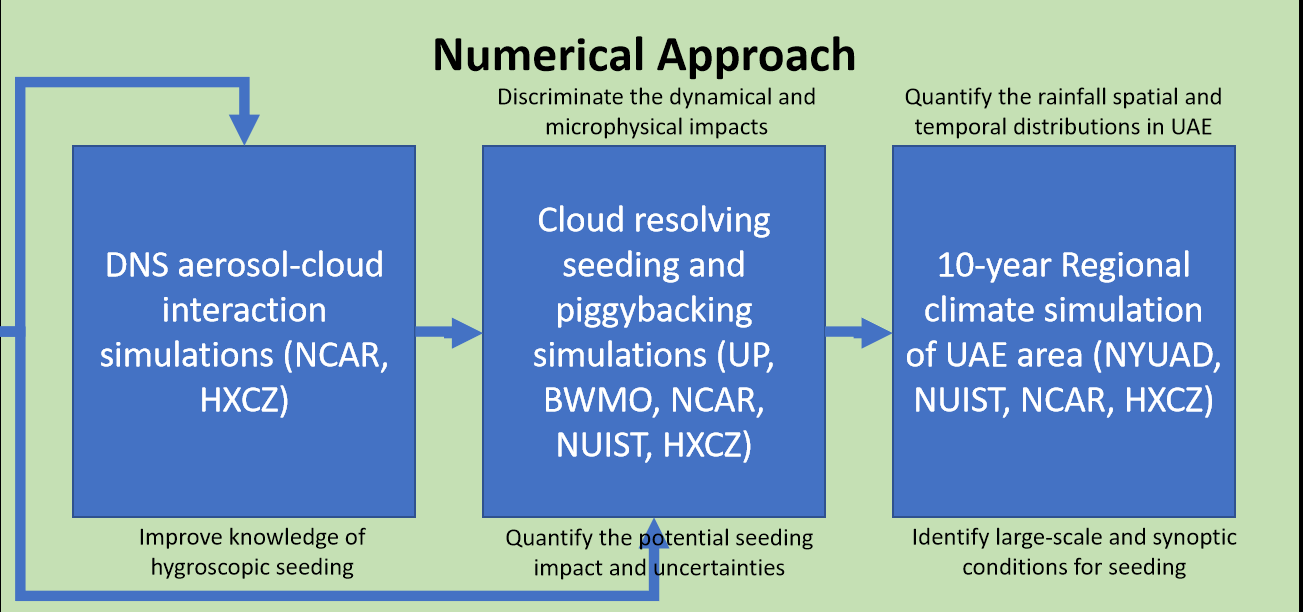The main structure of the UAE-NATURE project consists of the advanced laboratory experiments and the state-of-the-art numerical model simulations.
Development of microphysics parameterizations and fundamental understanding of microphysics and cloud seeding effect rely on the quantitative descriptions of microphysical process rates. Remote sensing and in-situ observations in the field can only capture the state of the microphysical properties but not the process rates. Laboratory measurement is currently the only way to quantitatively observe such information. Within the UAE-NATURE scope, the Beijing Aerosol Cloud Interaction Chamber is used to explore the possible effect of hygroscopic seeding and glaciogenic seeding materials on cloud particle size distribution (PSD). The experimental works will be accomplished by the Hua Xin Chuang Zhi Sci. & Tech. LLC. (HXCZ) and Beijing Weather Modification Office (BWMO) project participants.
Though the laboratory observations can provide quantitative microphysical impacts by cloud seeding under the specific controlled conditions, they can be different in the real clouds at different scales and under different environments. Benchmark numerical simulations that can capture the laboratory observations are needed to scale up or to develop the parameterizations for models that simulate at the real cloud scale or even at the regional climate scale. These models with such cloud seeding parameterizations can then be used to study the seeding impacts through microphysics and dynamics feedback separately and to ultimately quantify the seeding effect on rainfall.

